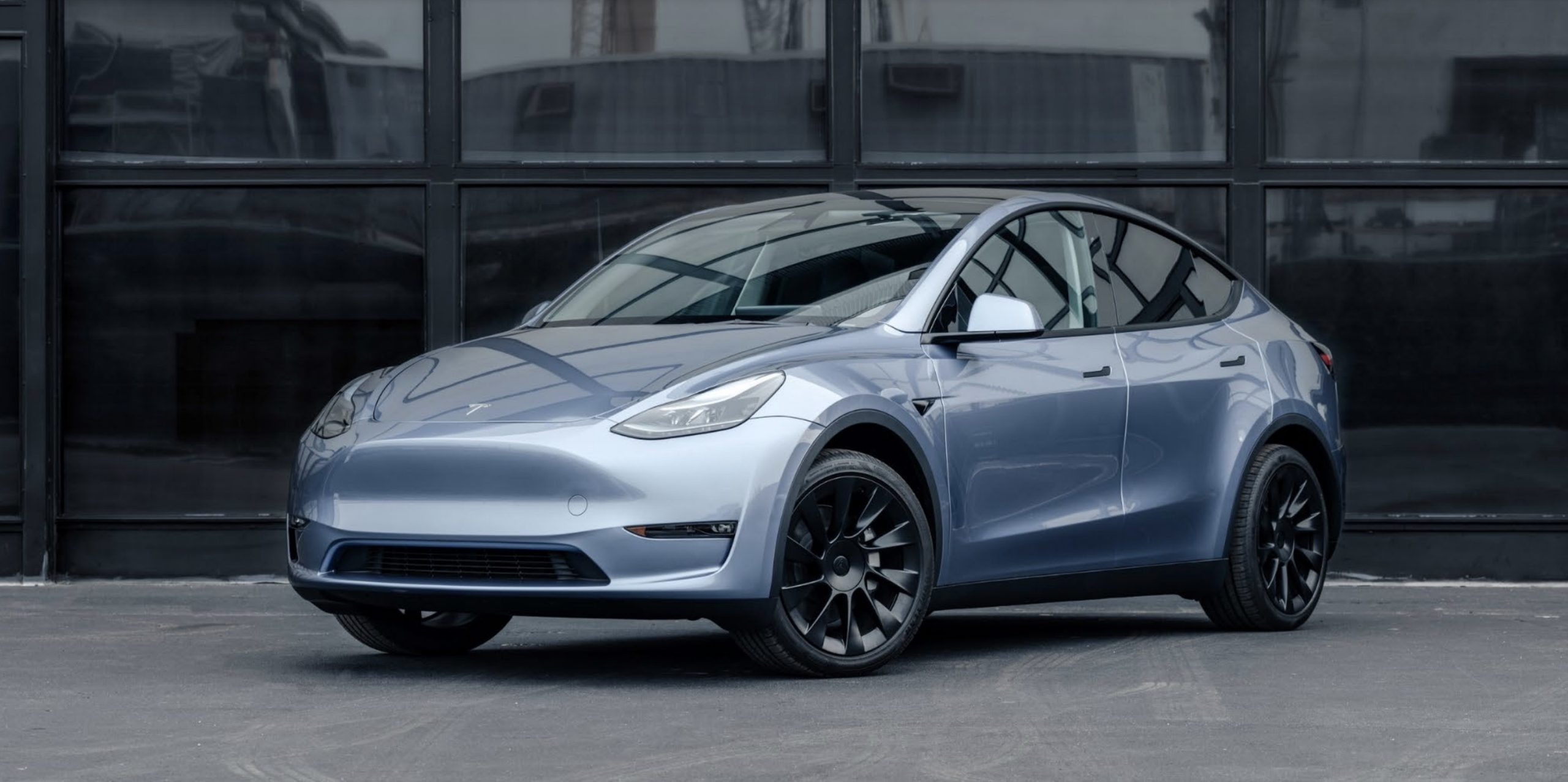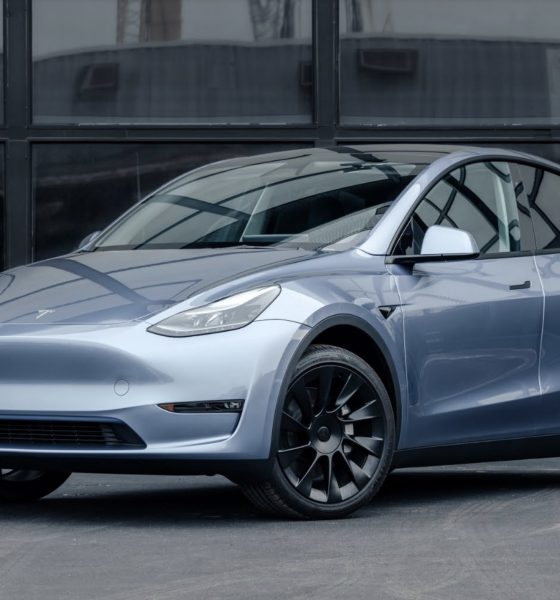Tesla’s highly anticipated update to its Summon feature, dubbed Actually Smart Summon or simply “ASS,” has started its rollout to consumers. The new Full Self-Driving feature was included in the company’s 2024.27.20 update. Based on initial reviews of the newly-announced feature, it appears that Tesla’s ASS is indeed impressive.
Tesla’s Summon feature for its vehicles has gone through several iterations. Summon was initially introduced in early 2016 as part of Tesla’s Autopilot Version 7.1 update. The feature allowed the Model S and Model X to operate without a driver, but it only allowed Teslas to move forward and back while the owner was standing outside the vehicle. It worked, though it was mostly useful just for getting in and out of a parking space or garage.
Some ASS (Actually Smart Summon)
HW4 vs HW3 tests in a parking lot with @WholeMarsBlog and my Model 3 Performances
HW3 and HW4 perform exactly the same, super impressed. Quick decision making and good behavior around pedestrians, great work @Tesla_AI team@elonmusk @aelluswamy pic.twitter.com/EP1EHoBy98— Zack (@BLKMDL3) September 4, 2024
Tesla rolled out Smart Summon with Autopilot Software Version 10 in 2019. Smart Summon was designed to allow a Tesla to get out of a parking spot and pick up its occupants without a driver. The feature was impressive as it allowed Teslas to navigate a parking lot completely driverless, but its reliability was not the best. To improve this, Tesla started work on a feature that Elon Musk dubbed “Actually Smart Summon,” or “ASS” for short.
My Dad demos Tesla Actually Smart Summon (ASS) pic.twitter.com/2dql6zwyHO— Whole Mars Catalog (@WholeMarsBlog) September 4, 2024
The lead-up to the release of Actually Smart Summon took a long time, with Musk mentioning the feature’s development in 2022. At the time, the CEO noted that the feature was almost done. The rollout of the Smart Summon update was then pushed back until its recent release with update 2024.27.20.
On the brink of a breakthrough. A huge one.
If @Tesla succeeds in shoving its ASS in the world’s face and proves to be safer than a human, assertive and comfortable in the real world, we are just inches away from full autonomy.
The effect of seeing perfect ASS everywhere in… pic.twitter.com/rwcgfddnfF— Kees Roelandschap (@KRoelandschap) September 3, 2024
Considering the long wait for the feature, it was no surprise that Tesla owners have started posting reviews of ASS in action. So far, initial feedback from Tesla owners has been positive, with several users posting videos of the newly released feature in action. As could be seen in videos that have been shared online, ASS moves significantly more confidently than Smart Summon, and its pace is a lot more natural too.
Actually Smart Summon w/ HW3 – tested at COSTCO pic.twitter.com/BQt49G2Taw— ⚡️TechGeek Tesla ?⚡️ (@jonbbc) September 4, 2024
Interestingly enough, Actually Smart Summon’s performance seems to be equally impressive in both Hardware 3 and Hardware 4 vehicles. This has been appreciated by the Tesla community, as it suggests that Hardware 3 vehicles could still receive the most advanced FSD features that the company could release.
Watch Tesla’s ASS in action in the video below.
Don’t hesitate to contact us with news tips. Just send a message to simon@teslarati.com to give us a heads up.

News
Nvidia CEO Jensen Huang explains difference between Tesla FSD and Alpamayo
“Tesla’s FSD stack is completely world-class,” the Nvidia CEO said.

NVIDIA CEO Jensen Huang has offered high praise for Tesla’s Full Self-Driving (FSD) system during a Q&A at CES 2026, calling it “world-class” and “state-of-the-art” in design, training, and performance.
More importantly, he also shared some insights about the key differences between FSD and Nvidia’s recently announced Alpamayo system.
Jensen Huang’s praise for Tesla FSD
Nvidia made headlines at CES following its announcement of Alpamayo, which uses artificial intelligence to accelerate the development of autonomous driving solutions. Due to its focus on AI, many started speculating that Alpamayo would be a direct rival to FSD. This was somewhat addressed by Elon Musk, who predicted that “they will find that it’s easy to get to 99% and then super hard to solve the long tail of the distribution.”
During his Q&A, Nvidia CEO Jensen Huang was asked about the difference between FSD and Alpamayo. His response was extensive:
“Tesla’s FSD stack is completely world-class. They’ve been working on it for quite some time. It’s world-class not only in the number of miles it’s accumulated, but in the way it’s designed, the way they do training, data collection, curation, synthetic data generation, and all of their simulation technologies.
“Of course, the latest generation is end-to-end Full Self-Driving—meaning it’s one large model trained end to end. And so… Elon’s AD system is, in every way, 100% state-of-the-art. I’m really quite impressed by the technology. I have it, and I drive it in our house, and it works incredibly well,” the Nvidia CEO said.
Nvidia’s platform approach vs Tesla’s integration
Huang also stated that Nvidia’s Alpamayo system was built around a fundamentally different philosophy from Tesla’s. Rather than developing self-driving cars itself, Nvidia supplies the full autonomous technology stack for other companies to use.
“Nvidia doesn’t build self-driving cars. We build the full stack so others can,” Huang said, explaining that Nvidia provides separate systems for training, simulation, and in-vehicle computing, all supported by shared software.
He added that customers can adopt as much or as little of the platform as they need, noting that Nvidia works across the industry, including with Tesla on training systems and companies like Waymo, XPeng, and Nuro on vehicle computing.
“So our system is really quite pervasive because we’re a technology platform provider. That’s the primary difference. There’s no question in our mind that, of the billion cars on the road today, in another 10 years’ time, hundreds of millions of them will have great autonomous capability. This is likely one of the largest, fastest-growing technology industries over the next decade.”
He also emphasized Nvidia’s open approach, saying the company open-sources its models and helps partners train their own systems. “We’re not a self-driving car company. We’re enabling the autonomous industry,” Huang said.
Elon Musk
Elon Musk confirms xAI’s purchase of five 380 MW natural gas turbines
The deal, which was confirmed by Musk on X, highlights xAI’s effort to aggressively scale its operations.

xAI, Elon Musk’s artificial intelligence startup, has purchased five additional 380 MW natural gas turbines from South Korea’s Doosan Enerbility to power its growing supercomputer clusters.
The deal, which was confirmed by Musk on X, highlights xAI’s effort to aggressively scale its operations.
xAI’s turbine deal details
News of xAI’s new turbines was shared on social media platform X, with user @SemiAnalysis_ stating that the turbines were produced by South Korea’s Doosan Enerbility. As noted in an Asian Business Daily report, Doosan Enerbility announced last October that it signed a contract to supply two 380 MW gas turbines for a major U.S. tech company. Doosan later noted in December that it secured an order for three more 380 MW gas turbines.
As per the X user, the gas turbines would power an additional 600,000+ GB200 NVL72 equivalent size cluster. This should make xAI’s facilities among the largest in the world. In a reply, Elon Musk confirmed that xAI did purchase the turbines. “True,” Musk wrote in a post on X.
xAI’s ambitions
Recent reports have indicated that xAI closed an upsized $20 billion Series E funding round, exceeding the initial $15 billion target to fuel rapid infrastructure scaling and AI product development. The funding, as per the AI startup, “will accelerate our world-leading infrastructure buildout, enable the rapid development and deployment of transformative AI products.”
The company also teased the rollout of its upcoming frontier AI model. “Looking ahead, Grok 5 is currently in training, and we are focused on launching innovative new consumer and enterprise products that harness the power of Grok, Colossus, and 𝕏 to transform how we live, work, and play,” xAI wrote in a post on its website.
Elon Musk
Elon Musk’s xAI closes upsized $20B Series E funding round
xAI announced the investment round in a post on its official website.

xAI has closed an upsized $20 billion Series E funding round, exceeding the initial $15 billion target to fuel rapid infrastructure scaling and AI product development.
xAI announced the investment round in a post on its official website.
A $20 billion Series E round
As noted by the artificial intelligence startup in its post, the Series E funding round attracted a diverse group of investors, including Valor Equity Partners, Stepstone Group, Fidelity Management & Research Company, Qatar Investment Authority, MGX, and Baron Capital Group, among others.
Strategic partners NVIDIA and Cisco Investments also continued support for building the world’s largest GPU clusters.
As xAI stated, “This financing will accelerate our world-leading infrastructure buildout, enable the rapid development and deployment of transformative AI products reaching billions of users, and fuel groundbreaking research advancing xAI’s core mission: Understanding the Universe.”
xAI’s core mission
Th Series E funding builds on xAI’s previous rounds, powering Grok advancements and massive compute expansions like the Memphis supercluster. The upsized demand reflects growing recognition of xAI’s potential in frontier AI.
xAI also highlighted several of its breakthroughs in 2025, from the buildout of Colossus I and II, which ended with over 1 million H100 GPU equivalents, and the rollout of the Grok 4 Series, Grok Voice, and Grok Imagine, among others. The company also confirmed that work is already underway to train the flagship large language model’s next iteration, Grok 5.
“Looking ahead, Grok 5 is currently in training, and we are focused on launching innovative new consumer and enterprise products that harness the power of Grok, Colossus, and 𝕏 to transform how we live, work, and play,” xAI wrote.










